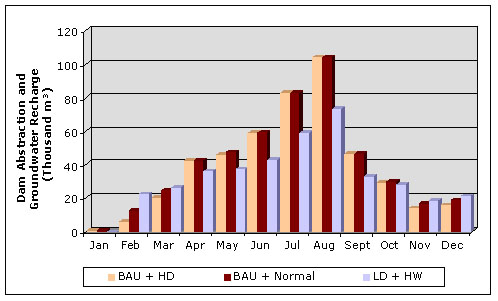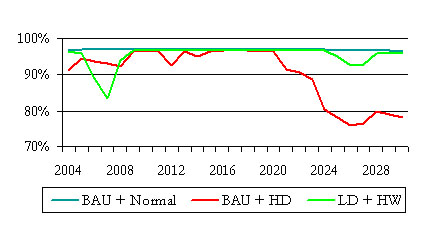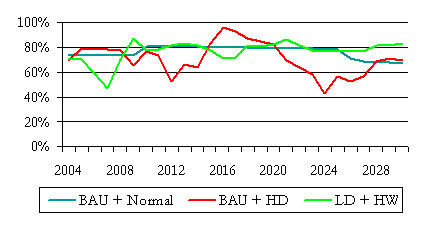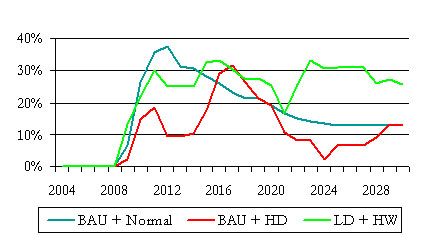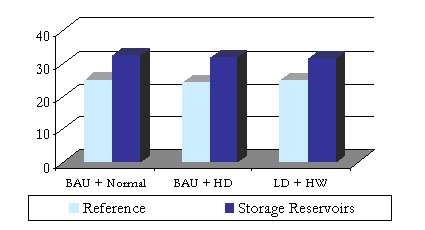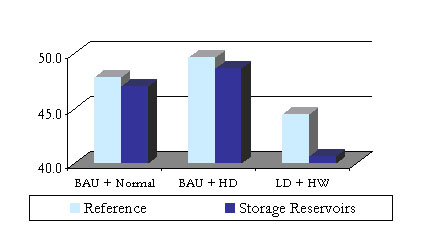
ISSUE 6 |
||||||||||||||||||||||||||||||||||||||||||||||||||||
|
|
|||||||||||||||||||||||||||||||||||||||||||||||||||
|
Table 1. Cost components for Kavouropotamos dam
|
||||||||||||||||||||||||||||||||||||||||||||||||||||
Option results |
||||||||||||||||||||||||||||||||||||||||||||||||||||
|
Figure 1 presents the abstraction from Kavouropotamos dam and the groundwater recharge from Vrontas dam under the BAU + Normal scenario. Figure 1. Monthly abstractions from Kavouropotamos and Vrontas dams for the three scenarios (year 2009) |
||||||||||||||||||||||||||||||||||||||||||||||||||||
|
|
||||||||||||||||||||||||||||||||||||||||||||||||||||
Effectiveness |
||||||||||||||||||||||||||||||||||||||||||||||||||||
|
The construction of storage reservoirs can be an effective solution in meeting domestic needs while at the same time increasing irrigation demand coverage, as can be seen in Figures 2 to 5. Under normal (average) availability (BAU+Normal scenario), the effect of the option is similar to the one of desalination. However, the option performs much worse in the case of dry years, when inflows to both dams drop to 30% of normal (average) ones. Figure 2. Percent demand coverage effectiveness of Storage Reservoirs to Domestic use
Figure 3. Percent Improvement of deficit in Domestic use with respect to the reference scenarios
Figure 4. Percent demand coverage effectiveness of Storage reservoirs to Irrigation use
Figure 5. Percent Improvement of deficit in Irrigation use with respect to the reference scenarios |
||||||||||||||||||||||||||||||||||||||||||||||||||||
Direct and Environmental Costs |
||||||||||||||||||||||||||||||||||||||||||||||||||||
|
Since alternative financing schemes are not examined at this stage, the Kavouropotamos dam is considered to be too expensive (even without including the operational costs of the system, such as pumping requirements). Another disadvantage concerns the operation of such an extensive network rather vulnerable to failures, which also renders the construction of a remote monitoring system for leakage control, and the facilities to support this, necessary. At the same time, the interception dam at Vrontas can with significantly lower costs help in the mitigation of the overexploitation of the aquifer and assist in sustaining the irrigation of the traditional vineyards in the municipal department of Naoussa.
Figure 6. Total direct cost difference of the Storage reservoirs option Given that the levels of abstraction are reduced and the recharge is increased due to the introduction of the interception dam, the environmental costs show a perceptible reduction, which becomes significant under the LD+HW conditions, which are optimal for both storage and groundwater recharge (Figure 7).
Figure 7. Total environmental cost difference of the Storage reservoirs option |
||||||||||||||||||||||||||||||||||||||||||||||||||||
